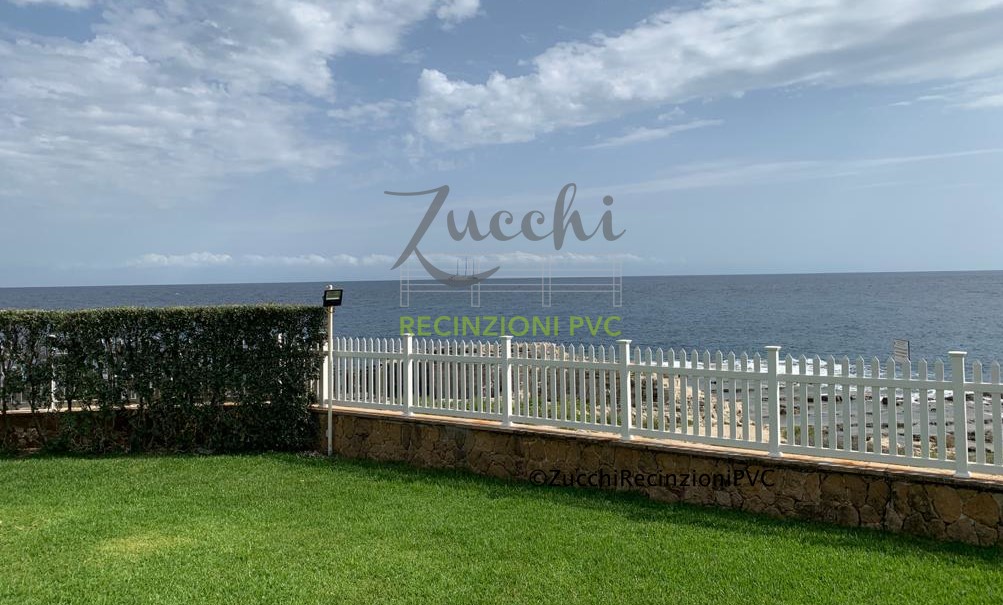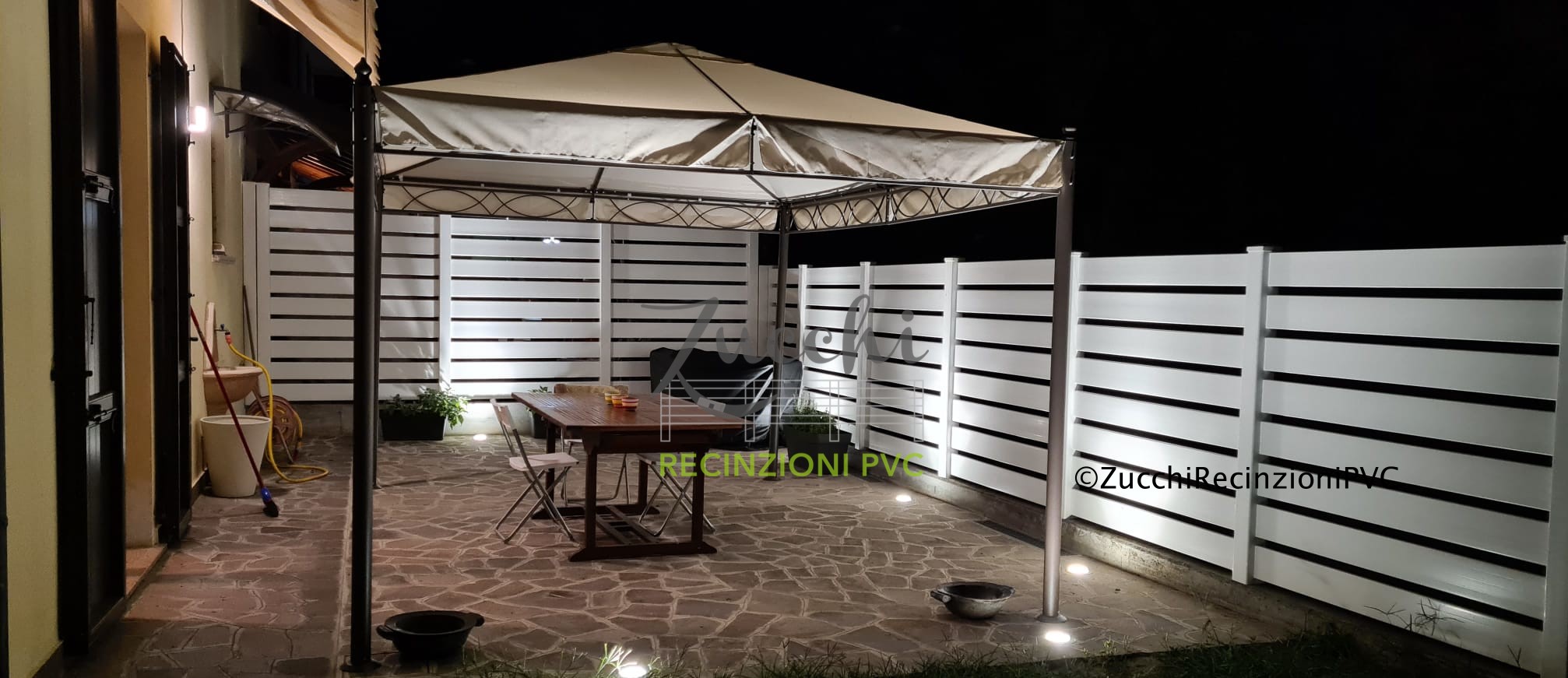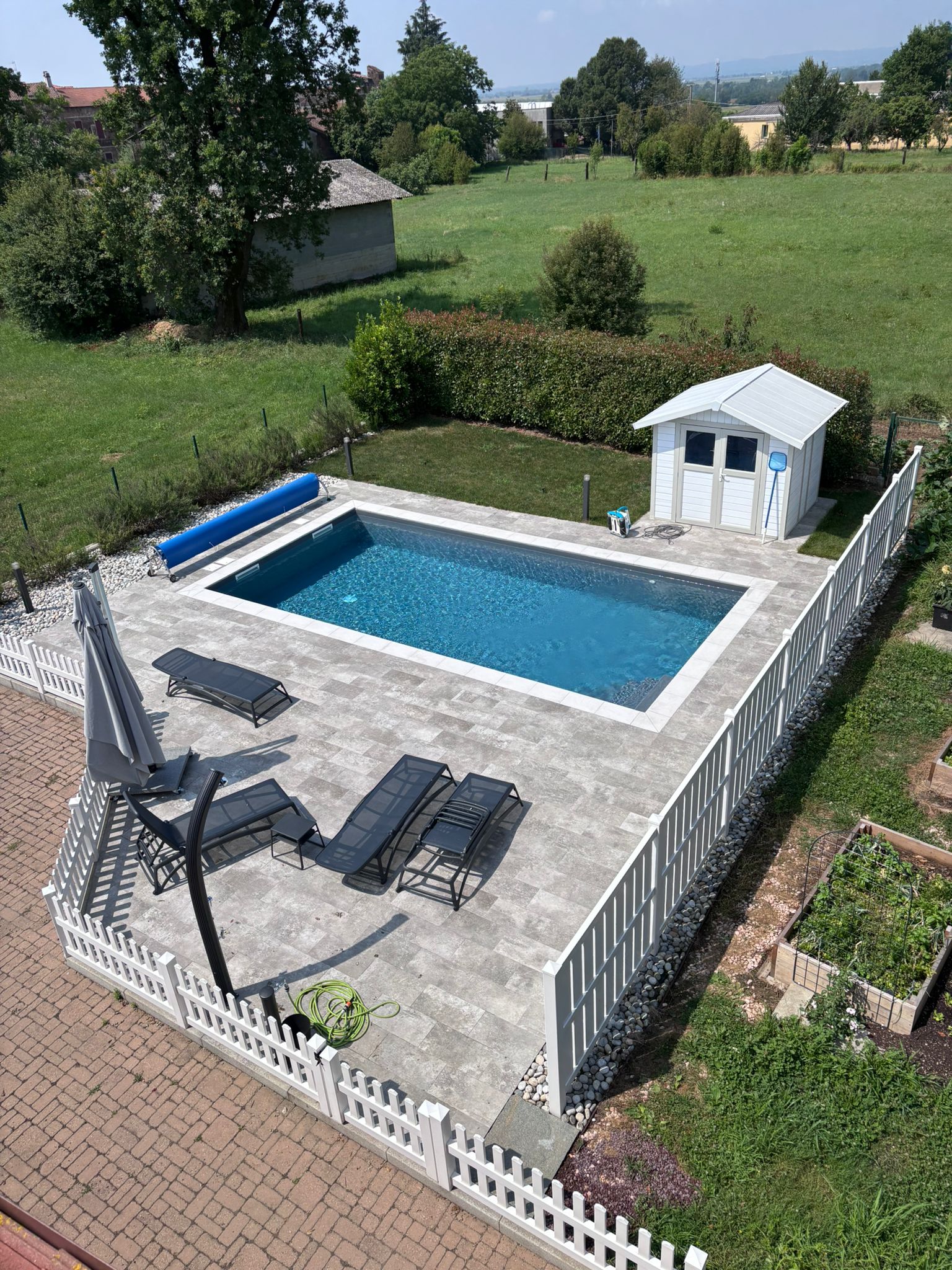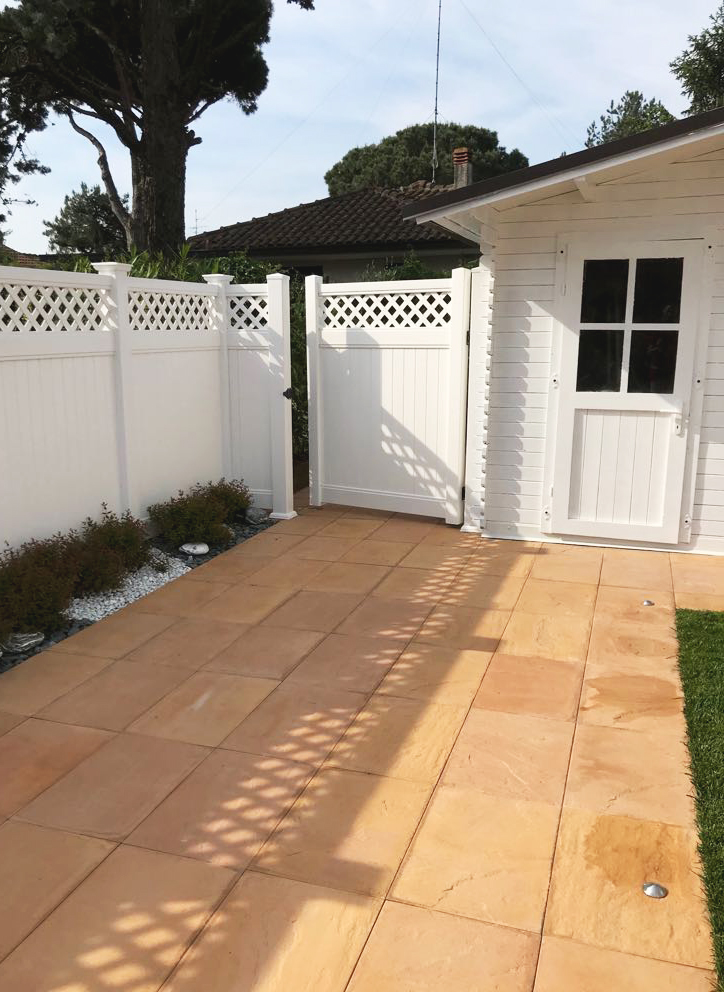Quick guide to saltwater-resistant materials
What is salt spray and why is it so corrosive?
If you live near the sea or are thinking of furnishing a coastal home, you’ve probably already heard of salt spray. But do you really know what it is? And why can it so easily damage wood, metals, and other materials? Don’t worry, I’ll explain it simply, so you can better understand the invisible enemy that challenges your seaside home.
Salt spray: a mix of salt and sea air
Salt spray is nothing more than a little magic made of seawater that turns into tiny droplets of salt suspended in the air. When the wind blows from the beach toward your home, it carries these salty particles with it. It seems harmless, right? But in reality, this salty mist is a kind of “magic dust” that settles everywhere: on walls, furniture, floors, and even on metal surfaces.
Imagine having a metal sheet that is exposed every day to a fine spray of salt. Over time, that salt seeps into tiny cracks and begins to corrode the metal, causing the dreaded rust to appear. It’s no coincidence that in coastal areas you see so many railings, gates, or iron elements showing signs of deterioration. The culprit is precisely the salt spray.
But it’s not just metal that suffers. Even wood, as beautiful and natural as it is, has its issues with salt spray. The salty moisture tends to make the wood fibers swell, weakening them and causing mold or rot. In short, that pleasant sea breeze can turn into a real problem if you don’t use the right materials.
Why is salt spray so hard to fight?
If you’re wondering why salt spray is so aggressive, the answer lies in its chemical composition and the way it settles. The salt in seawater is mainly sodium chloride, the same salt you use in the kitchen, but here it’s combined with moisture and oxygen in the air. This combination creates an ideal environment for corrosion processes.
Moreover, salt is hygroscopic, meaning it attracts and retains moisture from the air. This means that even if it’s hot outside and it doesn’t rain, the salt continues to keep the surfaces it settles on damp. Metal surfaces therefore remain “wet” enough to keep corroding slowly, even without direct water. It’s not like regular rain that dries and goes away.
And then there’s the wind, a silent but powerful accomplice. The wind continuously pushes the salt mist against your home, penetrating every corner, under cracks, and into the tiniest crevices. This makes salt spray practically impossible to remove completely with simple cleaning.
That’s why simply washing or painting isn’t enough to protect a seaside home: you need to choose materials designed specifically to withstand this harsh environment.
How to recognize damage caused by salt spray
You might be wondering how to tell if your home or furnishings are under the silent attack of salt spray. There are some easy-to-recognize signs that can help you prevent more serious damage.
First, look at metal surfaces: if you see rust appearing, even small and superficial, it’s a warning sign. Rust tends to spread and can compromise the strength of gates, railings, and various supports. So, it’s best to act immediately.
For wood, the main problem is the presence of mold, dark stains, or areas where the wood feels softer or is crumbling. These are signs of excessive moisture combined with salt. Sometimes, you might also notice a particular “sea-damp” or moldy smell, indicating that the wood has been compromised.
Even materials like tiles or stone surfaces can show damage, such as discoloration, white stains (called efflorescence), or small cracks caused by the combined action of salt and the wet/dry cycle.
Finally, if you live in a very windy area, you might notice a “sandblasted” feeling on surfaces: tiny particles of salt and sand that continuously scratch and wear down more delicate materials.
Comparison of materials: what lasts and what doesn’t
When you live near the sea, choosing the right materials for your home is essential. Nature here gives no concessions: salt spray, wind, and humidity are always ready to test every surface. But which materials can truly withstand this harsh environment? And which ones give out before you do? Let’s find out together, so you can make smart choices and enjoy your home without worries.
Wood: beautiful but vulnerable to sun and salt spray
Wood is one of the most loved materials for outdoor spaces. It has a natural charm that never goes out of style. However, if you live by the sea, you need to know that wood has a major Achilles’ heel: salt spray and humidity. Seawater penetrates the wood fibers, causing it to swell, warp, and sometimes rot.
In addition, the strong sun in coastal areas fades and dries out the wood, forcing you to apply coatings or treatments regularly. Without constant maintenance, wood can lose its beauty and strength in just a few years. Even treated wood, which promises longer durability, eventually wears out and requires frequent care.
If you love wood, it’s better to choose planks with special finishes or pair it with more durable materials to avoid unpleasant surprises. But be prepared: a bit of extra work will always be necessary.
Metals: strong but watch out for rust
Metals are often used for structures like railings, gates, and decorative details. It seems like a solid option, right? Yes, but in a coastal area, metal faces its greatest challenge: rust caused by salt spray. Salt, combined with humidity, accelerates corrosion, especially on untreated iron and steel.
You can find corrosion-resistant metals like aluminum or stainless steel, which perform better against rust. However, even these require care over time: regular inspections and specific treatments to maintain their appearance and functionality. If you choose metal, make sure it is properly protected and cleaned frequently, especially after storms or very humid periods.
In short, metal can last, but it isn’t completely “seawater-proof” without some maintenance.
PVC: the resilient superhero of the coast
Here’s the real surprise for those living in coastal areas: PVC. This plastic material has made great strides in recent years, becoming a formidable ally for those seeking durability and ease. PVC doesn’t absorb water, so it doesn’t swell or rot like wood. It doesn’t rust or corrode like metal, and it doesn’t fade easily.
Moreover, PVC is very easy to clean: just a bit of water and soap keeps it looking fresh and new. For those who don’t want to spend hours maintaining materials, it’s the perfect choice. In addition to durability, PVC comes in textures that mimic wood or stone, offering beauty without compromise.
It’s also a lightweight material, making it easier to install and handle, which is helpful for those tackling small DIY projects. In short, for anyone looking for a durable and practical outdoor flooring, PVC is the unbeatable champion, especially in the presence of salt spray and wind.
Other materials: stone, ceramics, and composites
Let’s not forget other materials often used in outdoor spaces: natural stone, ceramics, and composite materials. Stone is very resistant to the elements, but it can be prone to staining from salt spray or degradation if it’s porous. Additionally, installing stone requires skill and can be expensive.
Ceramics are beautiful and water-resistant, but beware: they can crack when exposed to temperature changes or impacts. Additionally, some tiles can become slippery when wet, a problem to consider especially near pools or damp areas.
Composite materials are an interesting middle ground. They are made of wood and plastic, and often promise better durability than wood alone. However, quality varies greatly, and some composites can fade or degrade more quickly in the presence of salt spray.
Which material to choose?
If you want a solution that simplifies your life, reduces maintenance, and truly withstands the marine environment, PVC is the safest and most modern choice. For those who prefer natural materials like wood or stone, it’s important to be ready for some extra work and to choose specific treatments.
In any case, knowing the strengths and weaknesses of each material allows you to make more informed decisions and enjoy your seaside home without surprises.
Smart protection and maintenance techniques
If you live near the sea, you know well that keeping your home beautiful and functional is a daily challenge. Between wind, humidity, and salt spray, it seems like every surface wants to deteriorate! But don’t worry: with a few smart tricks, you can protect your outdoor spaces without too much stress. Here are some clever techniques to best protect and maintain your floors and furnishings, without going crazy.
Regular cleaning: the secret to long-lasting durability
The first rule for defending against the elements is frequent cleaning. It may seem obvious, but removing dust, salt, and dirt before they accumulate really makes a difference. For PVC planks or durable materials, all you need is a broom or a soft cloth to remove sand and debris.
Then, occasionally use warm water and a mild, preferably neutral, detergent to remove more stubborn residues. Avoid harsh or abrasive products, as they could damage the surface or finish of the material. Regular cleaning keeps colors bright and reduces the risk of stains or mold.
Also remember to rinse surfaces thoroughly after washing: seawater salt can remain on the surface if not completely removed. There’s no need for complicated cleaning—just consistent and simple maintenance, so it never feels like a huge task.
Protective treatments: a small investment for big results
To protect more delicate materials like wood or certain metals, you can use specific treatments. Oils, paints, and sealants are valuable allies against moisture and salt. These products create a barrier that limits water absorption and slows corrosion or rot.
If you choose wood, look for natural oils or marine paints, specifically designed to withstand the elements. Applying them once or twice a year is often enough to keep the wood healthy and beautiful. For metal, you can opt for anti-rust paints or protective wax treatments.
Even PVC, while very durable, can benefit from specific products to maintain its shine and protection. In general, consult the seller or manufacturer to choose the right treatment for your material.
Smart prevention: small measures that make a big difference
Another way to keep your outdoor space in good shape is prevention. Preventing damage is easier and less expensive than fixing it afterward. For example, place covers or awnings in areas most exposed to sun or wind to limit direct exposure and wear.
Use mats or rugs at the entrance of terraces and gardens to collect sand and salt brought in on shoes. Moving furniture and plants during bad weather or winter can also help protect them.
Finally, keep an eye on cracks, stains, or signs of corrosion. Acting as soon as you notice a problem helps prevent more serious and costly damage. Even quick inspections once a month can work wonders for the health of your home.
DIY or professionals? When to ask for help
Sometimes maintenance can feel like a daunting task. If you enjoy DIY, many jobs are within your reach with simple tools and online video tutorials. For example, cleaning PVC or applying a protective treatment is fairly easy and can be done on your own.
However, in more complex cases, such as painting large wooden surfaces or treating metal structures, relying on a professional can save you from costly mistakes. Additionally, professionals often use higher-quality products and more effective techniques.
If you don’t have the time or inclination, consider an annual check-up by experts to assess the overall condition and carry out small preventive measures. This way, you ensure your home stays in good shape without stress.
Why PVC is the choice of marine designers
If you’ve ever wondered which material designers use to build outdoor spaces near the sea, PVC is often the answer. This material has become the absolute star when it comes to durability, practicality, and style in marine environments. Discover with me why PVC so easily wins over industry experts and why it could be perfect for your seaside home too.
Resistance that withstands salt spray and marine climates
Living near the sea means dealing with challenging weather conditions: salt spray, strong winds, constant humidity, and intense sun. All these elements can quickly damage traditional materials like wood and metal. That’s why marine designers choose PVC: it is practically immune to these problems.
PVC does not absorb water, so it doesn’t swell, rot, or warp. It doesn’t rust like metal and doesn’t require paint or anti-corrosion treatments. This means you can have floors, cladding, or furniture that remain beautiful and functional without needing constant replacement or repairs.
In short, PVC is like an invisible superhero that protects your outdoor spaces from wind, salt spray, and humidity, without keeping you up at night worrying about maintenance.
Versatile design that doesn’t compromise on aesthetics
If you think PVC is just styleless plastic, think again! Marine designers love this material for its aesthetic versatility as well. Modern PVC can perfectly mimic the look of natural wood, stone, or other premium materials, but without the typical drawbacks.
This means you can enjoy the warmth and beauty of wood with the practicality and durability of PVC. The textures are crafted so realistically that even non-experts find it hard to tell real from imitation. Additionally, the variety of colors and finishes allows you to customize your outdoor spaces to your taste, without sacrificing elegance and modernity.
For designers, this is a huge advantage: they can create refined, welcoming, and unique environments that are, above all, long-lasting and able to withstand the environmental stress of coastal areas.
Easy installation and maintenance: a benefit for everyone
Another reason PVC is the top choice for marine designers is its ease of installation. PVC planks are lightweight, easy to handle, and can be quickly assembled even on uneven or complex surfaces. This reduces time and costs on site, and most importantly, minimizes disruption for those living or working near the project.
Additionally, maintenance is truly a breeze. There’s no need to spend hours sanding, painting, or treating the material. A simple cleaning with water and soap is enough to keep PVC looking beautiful and functional. It doesn’t fade, chip, or absorb stains like natural materials.
For both designers and those using the space, this means less stress and more time to enjoy the sea and fresh air, worry-free.
In summary
PVC has become the preferred material for marine designers for a simple reason: it combines durability, aesthetics, and practicality in an unbeatable way. If you want flooring or cladding that lasts for years with minimal effort, this is the right choice.
In addition to being highly resistant to salt spray and humidity, PVC also offers an elegant and modern look, perfect for enhancing every corner of your seaside home. With its easy installation and maintenance, you can finally relax and fully enjoy your outdoor space.
Share This Story, Choose Your Platform!







Leave A Comment